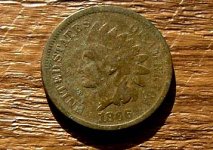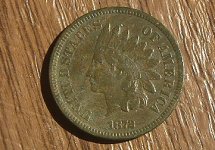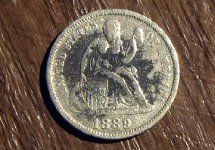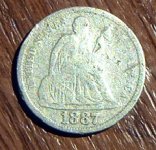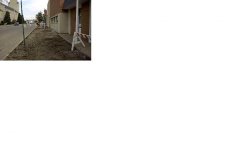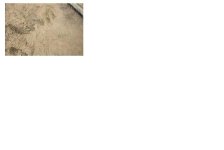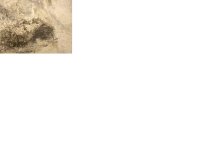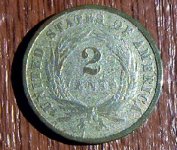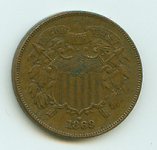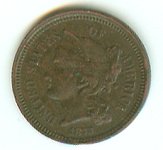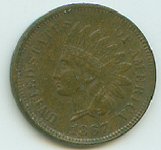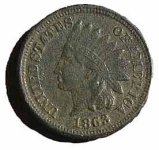Westernlegend1
Moved On
- Joined
- Mar 14, 2006
- Messages
- 5,019
Seated Quarter Finds Part 2
I remember the first of the seated quarters I had found. I was detecting a section of sidewalk that was going to be replaced. My old friend (Bruce) had told me that if any section of town would cough them up that this area would be the spot. It was a night hunt and I was all by myself. I was moving along and received a good signal that I could not determine what it could possibly be due to it?s being dark. The object layed in a mud puddle near a chunk of cement. I dug it out and knew I had a coin, by feel I figured it was a barber and walked to be nearer the street light and discovered my first seated quarter. The coin was an 1876 or 1877, not quite sure anymore without checking what little records I kept, but it was a ?CC? mint mark too which was the first of that mint mark for me also.
I remember the first of the seated quarters I had found. I was detecting a section of sidewalk that was going to be replaced. My old friend (Bruce) had told me that if any section of town would cough them up that this area would be the spot. It was a night hunt and I was all by myself. I was moving along and received a good signal that I could not determine what it could possibly be due to it?s being dark. The object layed in a mud puddle near a chunk of cement. I dug it out and knew I had a coin, by feel I figured it was a barber and walked to be nearer the street light and discovered my first seated quarter. The coin was an 1876 or 1877, not quite sure anymore without checking what little records I kept, but it was a ?CC? mint mark too which was the first of that mint mark for me also.


